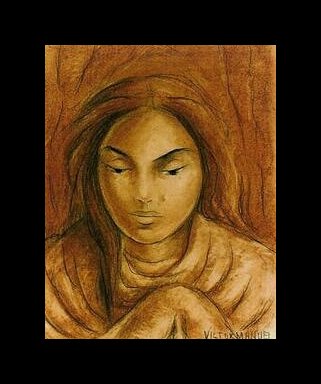Victor Manuel Garcia (1897-1969)
Get a Manuel Certificate of Authenticity for your painting (COA) for your Manuel drawing.
For all your Manuel artworks you need a Certificate of Authenticity (COA) in order to sell, to insure or to donate for a tax deduction.
Getting a Manuel Certificate of Authenticity (COA) is easy. Just send us photos and dimensions and tell us what you know about the origin or history of your Manuel painting or drawing.
If you want to sell your Manuel painting or drawing use our selling services. We offer Manuel selling help, selling advice, private treaty sales and full brokerage.
We have been authenticating Manuel and issuing certificates of authenticity since 2002. We are recognized Manuel experts and Manuel certified appraisers. We issue COAs and appraisals for all Manuel artworks.
Our Manuel paintings and drawings authentications are accepted and respected worldwide.
Each COA is backed by in-depth research and analysis authentication reports.
The Manuel certificates of authenticity we issue are based on solid, reliable and fully referenced art investigations, authentication research, analytical work and forensic studies.
We are available to examine your Manuel painting or drawing anywhere in the world.
You will generally receive your certificates of authenticity and authentication report within two weeks. Some complicated cases with difficult to research Manuel paintings or drawings take longer.
Our clients include Manuel collectors, investors, tax authorities, insurance adjusters, appraisers, valuers, auctioneers, Federal agencies and many law firms.
We perform Victor Manuel Garcia art authentication, appraisal, certificates of authenticity (COA). Victor Manuel Garcia analysis, research, scientific tests, full art authentications. We will help you sell your Victor Manuel Garcia or we will sell it for you.
Victor Manuel Garcia is considered by many as being the father of the Golden Age in Cuban painting. His methods and simple styling have made him a leader in the Vanguard era, and his art has inspired generations to paint Cuban themes.
From a very early age, Manuel showed talent in art. He enrolled at the San Alejandro School in Havana as a child, and by the time he was 16, he was unofficially named the professor of elemental drawing.
Though an extremely talented artist, he did not really recognize his own talent until much later on. His first exhibit was in 1924 in Havana, and a year later, he traveled to study in France. He also made trips to Spain and Belgium to study old masters, new techniques and primitive styles.
It was while he was studying and painting in France, that he became friends with the Impressionists. They encouraged him to sign his work “Victor Manuel” and to drop the “Garcia,” which he began doing from then on.
After his brief stay abroad, Manuel returned to Cuba and taught painting to artists free of charge for a couple of years. He was very involved in the idea that painting was not an outlet for emotion, but rather an expression of the artist.
Most of Manuel’s paintings are of feminine figures, landscapes and country scenes. However, his paintings always had a fiercely Cuban theme.
One of Manuel’s best-known paintings is “La Gitana Tropical”, which translates into “The Tropical Gypsy.”

“La Gitana Tropical” is regarded by the Cuban art community as one of the defining piece of the Vanguard era. In this painting, Manuel has combined his knowledge of European methods with primitive styling and Cuban culture. This is typical of his paintings as can also be seen in his landscape scenes such as “Parque de la Habana”.

In the 1940s and 50s, his work began to take on a very distinct style of its own. The women in his paintings began to take on a similar look in their eyes, and had very stylized eyebrows and almond shaped eyes. This look is very different from “La Gitana Tropical” and is typical of the style he uses in his portrait “Joven”.

Toward the end of his career, his work became even more different and even leaned towards the abstract. He began to paint in gouache, almost cubist portraits of women. This would definitely make it hard to recognize one of Manuel’s works from his last few years.
Another interesting aspect of Manuel is that he had absolutely no consistency when it came to signing his work. Sometimes it would just say “VICTOR MANUEL” in all caps in the bottom right hand corner. Other times he would sign in big swirly script, slanted. Other times, there would be no trace of a signature on the front at all. He also signed a different name for the first fifteen or so years of his career as an artist. This may make authenticating a piece of work from Manuel a very interesting and tricky process.
Today, Victor Manuel’s work is housed in Cuba as well as in private collections. He was a teacher to many of the great Cuban artists in his lifetime, and helped to begin the national trend of painting in the spirit of Cuba.
Reviews
1,217 global ratings
5 Star
4 Star
3 Star
2 Star
1 Star
Your evaluation is very important to us. Thank you.
